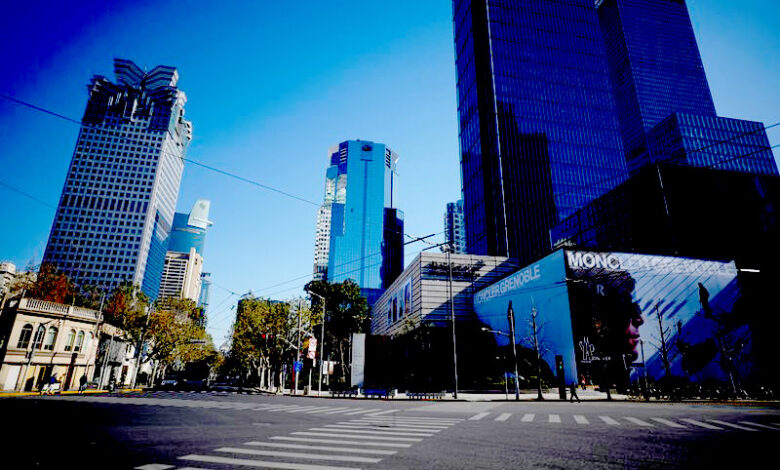China is slowly getting ready to live with COVID, so people in Beijing and Shanghai are going back to work.

(Reuters) – Beijing/Shanghai:
On Monday, commuters in Beijing and Shanghai crowded into subway trains while wearing masks. China’s two biggest cities are getting closer to having to live with COVID-19, as millions of people have been infected with the virus all over the country.
President Xi Jinping got rid of the country’s “zero-COVID” policy of lockdowns and constant testing this month in response to protests and a growing outbreak of the coronavirus. This policy had been in place for three years.
Health experts and residents worry that China’s statistics, which show that no new COVID deaths have been reported for the past six days through Sunday, don’t reflect the real number of deaths and that the country’s fragile health system is being overworked.
After the initial shock of the policy change and a few weeks of people in Beijing and Shanghai staying inside, either because they were sick or trying to avoid getting sick, there are signs that life is getting back to normal.
On Monday, as people went to work, subway trains in Beijing and Shanghai were full, and some major roads in the two cities were clogged with slow-moving cars.
Lin Zixin, who is 25 years old and lives in Shanghai, said, “I am ready to live with the pandemic.” “Lockdowns are not a good solution in the long run.”
In China’s commercial hub, where 25 million people live, a strict lockdown lasted from April 1 until June 1 this year. This was done to stop infections from spreading out of control across the country.
In April and May, when almost no one was outside, Shanghai’s streets were very different from how they were in September and October.
Over the weekend, many people in Shanghai went to the annual Christmas market at the Bund, a shopping area. On Sunday, people in Christmas-themed clothes lined up for rides at Shanghai Disneyland and Beijing’s Universal Studios during the winter holiday season.
This weekend, 132% more people went to scenic spots in the southern city of Guangzhou than they did last weekend, according to the 21st Century Business Herald.
“Most people are back to their normal routines now,” said Han, a 29-year-old resident of Beijing. “The mood is no longer tense.”
China is the last big country to start thinking of COVID as a widespread problem. Its efforts to keep things under control had slowed the $17-trillion economy to its slowest rate of growth in almost 50 years, which had messed up supply chains and trade around the world.
Analysts say that the world’s second-largest economy will suffer more in the short term as the COVID virus spreads to manufacturing areas and workers get sick, but it will get better next year.
On Saturday, Tesla (NASDAQ:TSLA) stopped making cars at its Shanghai plant, a week earlier than planned. Most work at the plant was supposed to stop in the last week of December. The company didn’t explain why.
RISING WAVE
The country with the most people has changed the way it counts COVID-related deaths to only include those caused by pneumonia or respiratory failure. This has made health experts around the world raise their eyebrows.
State media say that the country’s health care system has been under a lot of stress, with staff being asked to work while sick and retired doctors and nurses in rural areas being hired back to help.
The government of Zhejiang, a large industrial province near Shanghai with a population of 65,4 million, said on Sunday that it was fighting about a million new COVID-19 infections every day, and that number was expected to double in the next few days.
Health officials in the southeastern province of Jiangxi said that the number of infections would peak in early January. They also said that there could be other peaks as people travel to celebrate the Lunar New Year next month.
They said that the wave of infections would last for three months and that about 80% of the 45 million people who live in the province could get sick.
In the eastern province of Shandong, the city of Qingdao says that up to 530,000 people are getting sick every day.
Cities all over China have been in a rush to build intensive-care units and fever clinics, which are meant to stop contagious diseases from spreading more in hospitals.
State media reported that the number of fever clinics in Beijing went from 94 to almost 1,300, as reported by the city’s municipal government. Shanghai has 2,600 of these kinds of clinics, and doctors have been moved from less busy areas of medicine to help out.
There are still worries about how China’s poorer cities will handle a rise in serious infections, especially since hundreds of millions of rural migrant workers are expected to go home for the Lunar New Year.
Lin, who lives in Shanghai, said, “I’m worried that there will be a huge influx of people and that the disease will start up again.”





